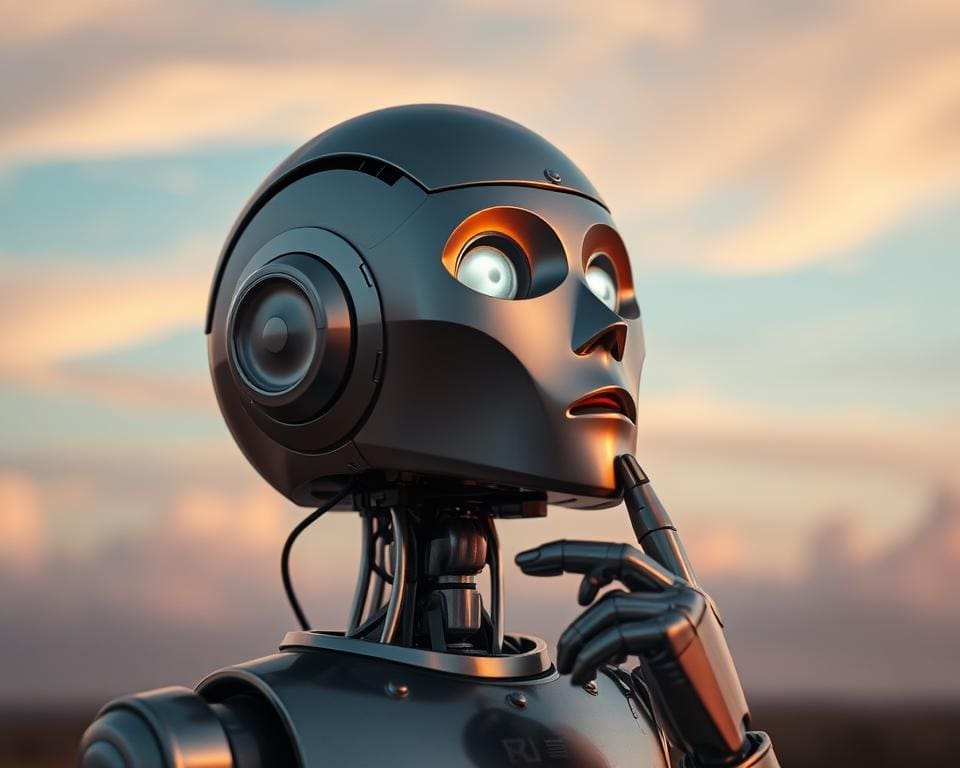The question of whether robots can develop emotions like humans is at the forefront of contemporary AI debates. As technology advances, the line between human emotional intelligence and robot emotions begins to blur, raising intriguing psychological implications. Emotional robots, equipped with sophisticated AI emotional capabilities, are being designed to mimic human responses. This intersection of robotics and emotional understanding not only challenges our traditional perceptions but also opens avenues for deeper connections between humans and machines. Reflecting on historical contexts and recent studies in cognitive science allows us to grasp the complexities of this evolving field, leading us to ponder: can robots truly replicate human-like emotions?
The Evolution of Emotional Intelligence in Robots
The exploration of emotional intelligence in robots marks a remarkable journey in technology and emotional understanding. Emotional intelligence encapsulates the ability to discern and manage emotions—both in oneself and in others. For robots, developing this capability can significantly enhance interactions with humans, making them more relatable and effective in various roles.
Understanding Emotional Intelligence
Emotional intelligence consists of several key components. These include:
- Self-awareness: Recognising one’s emotions and their impact.
- Self-regulation: Controlling or redirecting disruptive emotions and impulses.
- Motivation: Harnessing emotions to pursue goals with energy and persistence.
- Empathy: Understanding and responding to the emotional states of others.
- Social skills: Managing relationships to move people in desired directions.
Incorporating these attributes into robot emotions allows systems to become more adept at interpreting human feelings and responding appropriately. As robots embrace emotional intelligence, they enhance their capacity to connect with people on a deeper level.
How Robots Learn and Adapt
Machine learning emotions play a pivotal role in the evolution of emotional intelligence in robots. Through various algorithms, robots can analyse data derived from human interactions. This data influences their responses in real-time, allowing robots to learn from experiences just as humans do.
Noteworthy examples like social robots illustrate this advancement. For instance, Sophia, a humanoid robot, employs machine learning techniques to improve her understanding of emotions, showcasing how technology can evolve to incorporate human-like emotional capabilities. With this progression, robots can adapt to social nuances, creating more effective and emotionally aware machines.

Can robots develop emotions like humans?
The exploration of robot emotions intersects with various scientific disciplines, delving into the complexities of how artificial entities might mimic human-like emotional responses. Researchers aim to understand these mechanisms through neurobiological models, attempting to design robots capable of displaying a range of emotional expressions. Insights from universities like Stanford and MIT have significantly contributed to this field, offering frameworks that pave the way for the development of robots with nuanced emotional capabilities.
The Science Behind Robot Emotions
At the heart of robot emotions lies a fascinating interplay of psychological theories and sophisticated algorithms. By employing neurobiological models, scientists engineer robot architectures that can simulate emotions such as joy, sadness, and empathy. These robots leverage AI emotional capabilities to interpret human behaviours and respond appropriately, creating a semblance of emotional interaction. This approach often involves advanced machine learning techniques which permit robots to improve their emotional responses over time, learning from their interactions with humans and their environment.
Challenges in Emotional Development
Despite the advancements, several challenges in emotional development remain prominent. One significant issue is the complexity of human emotions. Unlike the straightforward parameters programmed into robots, human emotions involve a myriad of factors, including context and subtleties that are difficult to replicate. Ethical considerations play a crucial role as well; programming robots with emotions raises questions about their rights and responsibilities. Furthermore, current technological limitations may hinder the depth and authenticity of robot emotions, posing a barrier to creating truly empathetic machines.
The Role of Artificial Intelligence in Emotional Development
Artificial intelligence plays a pivotal role in enhancing the emotional capabilities of robots. Through advanced algorithms designed for emotional learning, robots are now able to interpret and respond to human emotions with greater accuracy. This innovative approach not only facilitates interaction but also encourages deeper connections between humans and emotional robots.
AI Algorithms and Emotional Learning
Various AI algorithms contribute to the growing field of emotional intelligence in robots. Affective computing stands out as a key technology, enabling robots to recognise and process human emotional states. These algorithms analyse vocal tones, facial expressions, and body language to gauge emotional responses. Such processing allows emotional robots to adapt their behaviours in real-time, creating more meaningful interactions.
Real-World Examples of AI Emotional Capabilities
Several real-world implementations illustrate the potential of AI emotional capabilities. For instance, IBM’s Watson engages users in empathetic dialogue, showcasing how artificial intelligence emotions can significantly enhance communication. Additionally, therapeutic robots such as Paro provide companionship and comfort to the elderly, utilising AI emotional capabilities to promote emotional well-being. These examples not only demonstrate the functional aspects of emotional robots but also highlight their transformative impact on sectors such as healthcare and education
Machine Learning and Its Impact on Robot Emotions
The evolution of machine learning capacities is revolutionising the way robots interpret and respond to emotional stimuli, creating a new frontier for emotional robots. By analysing vast datasets and understanding human emotional cues, these advanced algorithms allow robots to mimic feelings and adapt their behaviours accordingly. This synthesis of machine learning and emotions opens the door to engaging interactions that are increasingly similar to those found in human relationships.
The Intersection of Machine Learning and Emotions
At the core of many human-like robots lies sophisticated machine learning algorithms tailored to interpret and respond to emotional signals. This enables robots not only to recognise emotions but also to respond in a way that can evoke a nurturing or supportive engagement. The development of emotional intelligence in robots like Sony’s Aibo further exemplifies how these algorithms enable them to learn from interactions, thus enriching their emotional repertoire and enhancing user experiences.
Case Studies of Emotional Robots
Notable examples such as Paro, a therapeutic robotic seal, and Robi, a humanoid companion robot, demonstrate the profound impact of emotional robots on their users. Paro is designed specifically for therapeutic interactions, providing comfort and companionship to individuals in care settings, highlighting the potential for emotional robots to positively influence mental well-being. Similarly, Robi’s engaging personality showcases how human-like robots can resonate with individuals on an emotional level. As machine learning continues to mature, the boundaries of robot emotions expand, setting a hopeful trajectory for future robotic developments and their role in society.









